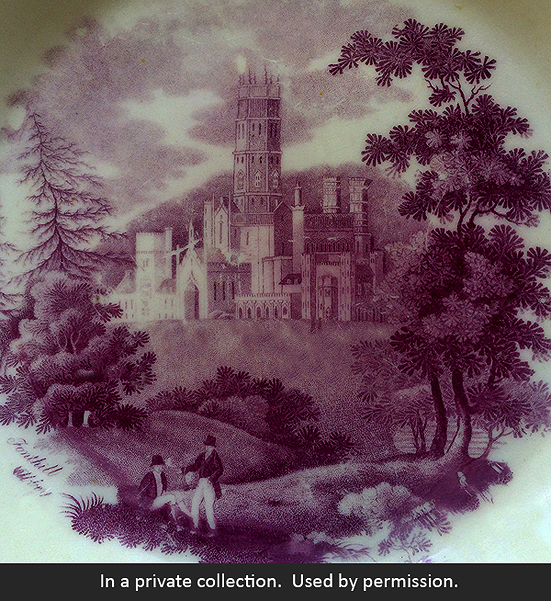
The house on a 19th century soup bowl
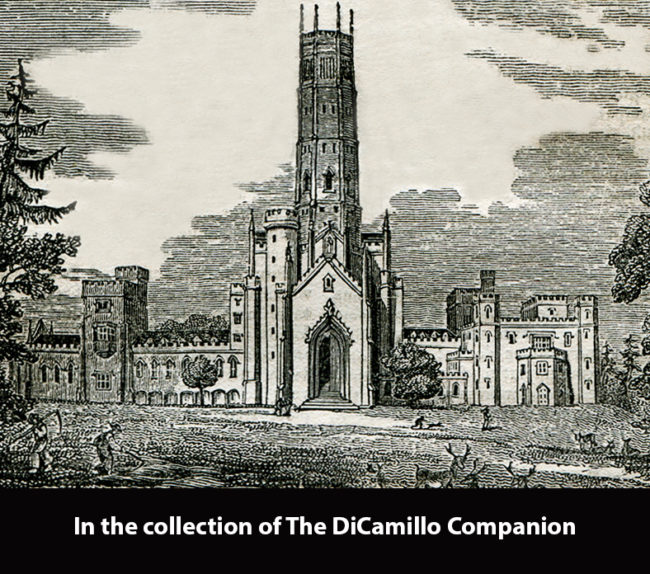
The house from "The Mirror," 1823.
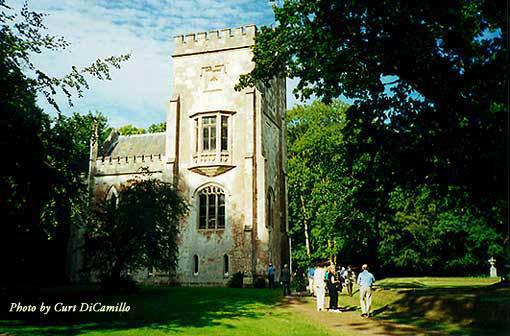
Extant fragment of the house
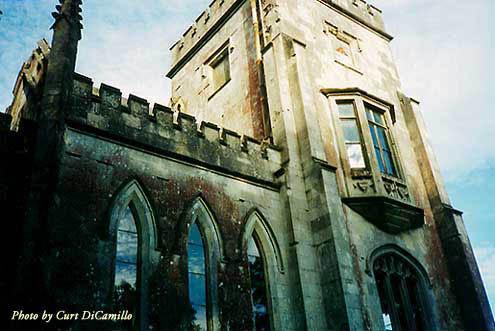
Detail of extant fragment
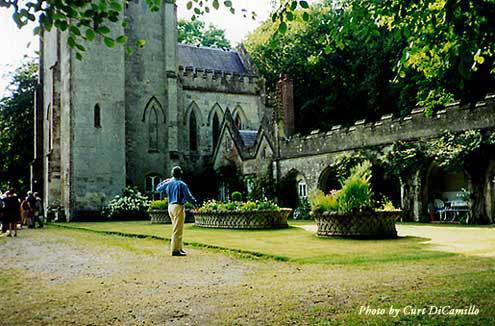
Extant fragment of the house with Victorian addition
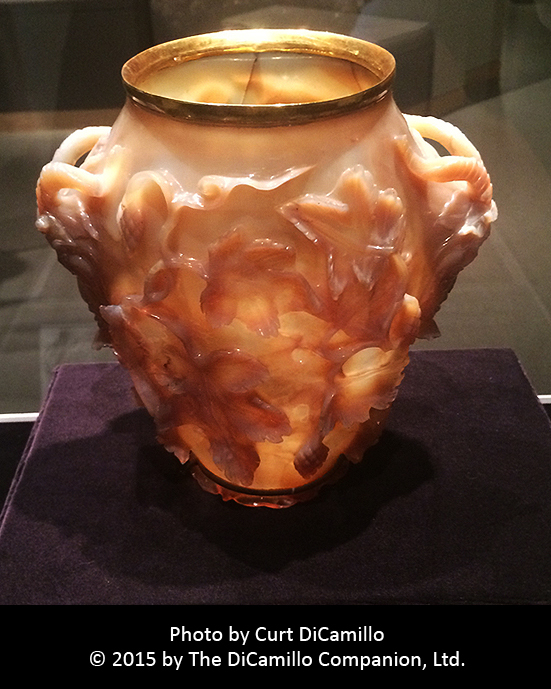
The Rubens Vase, today in the collection of the Walters Art Museum, Baltimore.
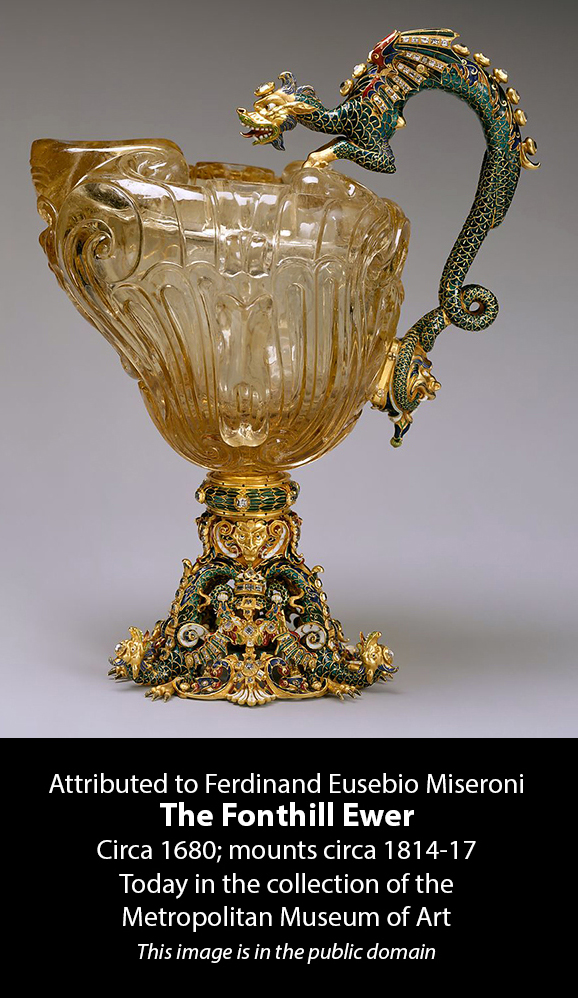
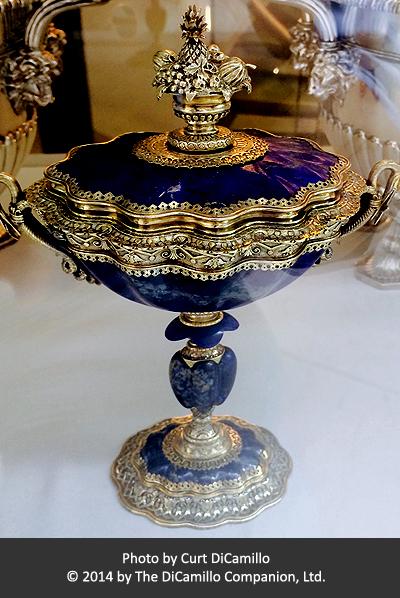
Lapis and vermeil standing cup and cover by John Harris VI, 1826-27, today in the collection of the Fitzwilliam Museum, Cambridge.
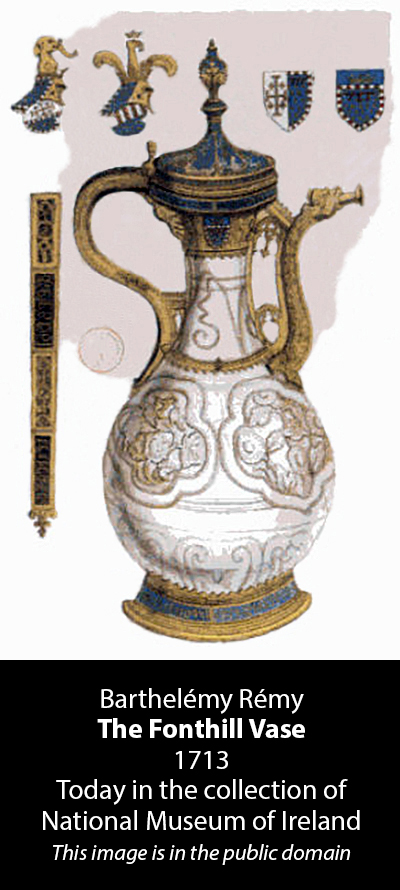
This is the earliest documented Chinese porcelain object to have reached Europe. This watercolor of the vase was made before it came into the ownership of William Beckford, after who it's named, and shows the vase with its earlier mounts (since removed) and armorials of Louis the Great of Hungary.
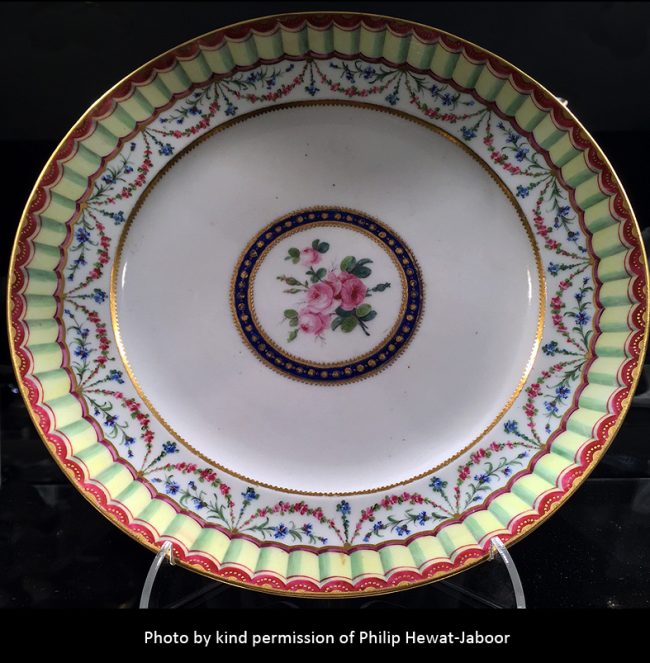
A 1792 plate from William Beckford's Sevres dinner service
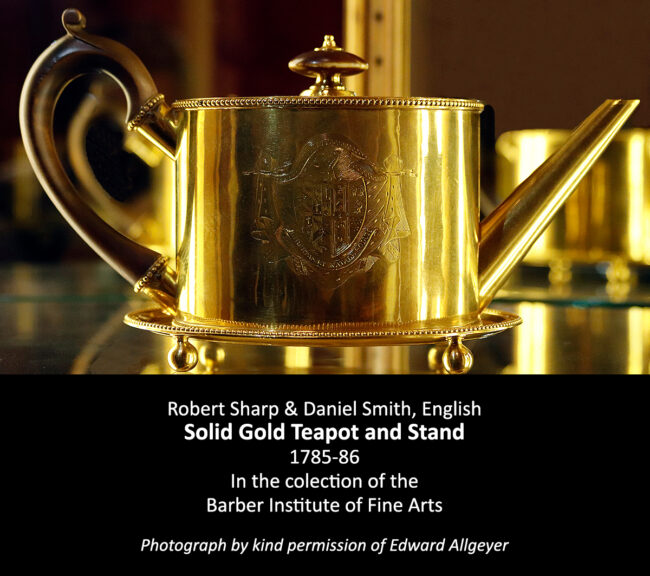
This teapot was commissioned by William Beckford
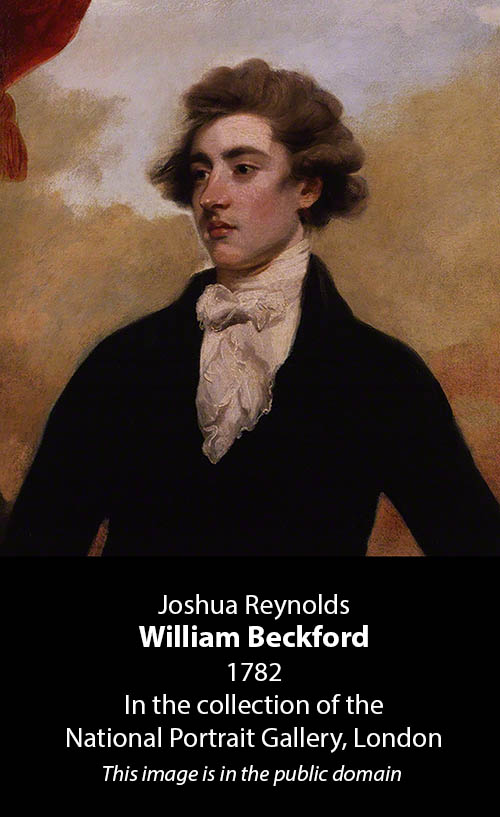
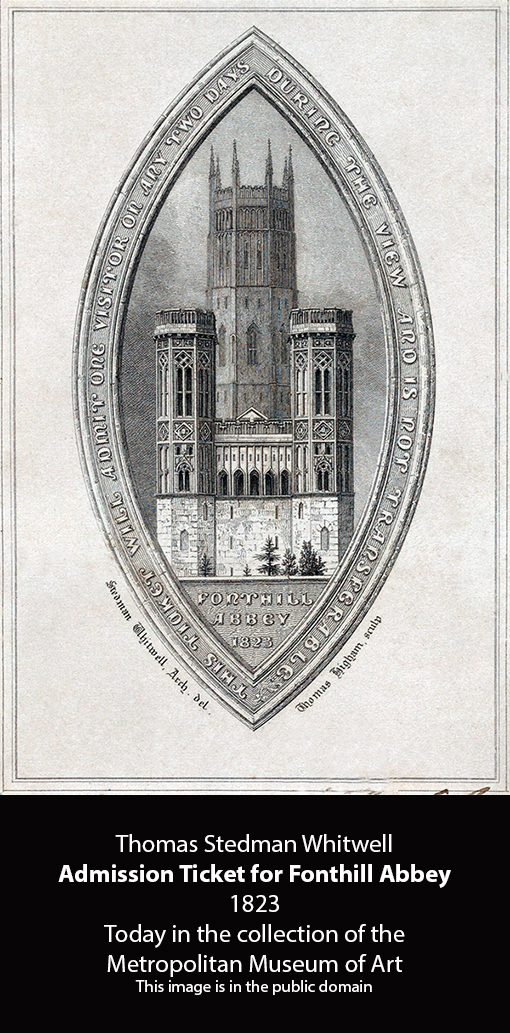
Admission ticket to view the Fonthill collection in situ before the 1823 auction of the contents of the house.
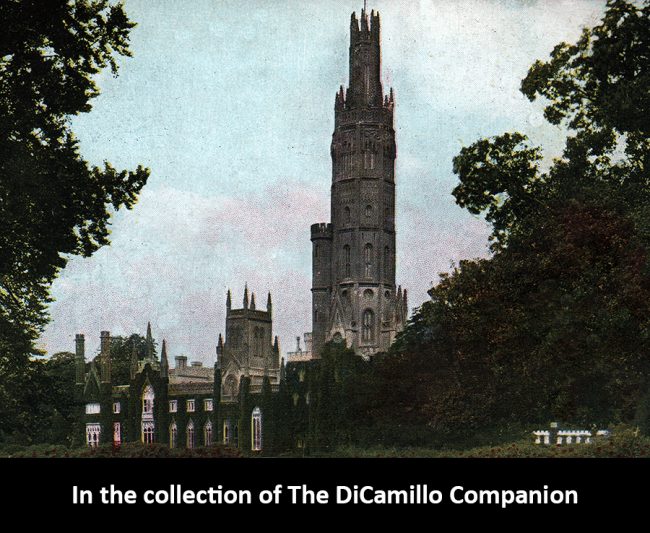
Hadlow Castle, Kent, whose tower may have been inspired by Beckford's tower at Fonthill.
Built / Designed For: William Beckford
House & Family History: William Beckford originally started the abbey as a folly on his father's 8,000-acre estate of Fonthill Splendens. This folly grew in size and eventually became Beckford's obsession, as well as his home (Fonthill Splendens was eventually demolished, the stone being used for the new abbey). With his architect, James Wyatt, Beckford planned the tower of the abbey to pass the height of the spire of Salisbury Cathedral (404 feet), the tallest in England. Beckford's creditors forced him to sell the abbey in 1822 for the vast sum of £330,000 (approximately £284 million in inflation-adjusted 2016 values using the labour value commodity index). It was purchased by the eccentric gunpowder millionaire John Farquhar, who lived in the abbey until the collapse of the tower the night of December 21, 1825 (this collapse should not have come as a surprise: the tower collapsed six times during its construction, being rebuilt each time with greater grandeur) . After the collapse the subsequent disappearance of most of the rest of the abbey was the result of the 2nd Marquess of Westminster, who used the ruins as building material for his new Fonthill Abbey (demolished 1955). All that remains today of the original abbey is half of the Perpendicular Gothic north wing, which contains the Sanctuary, the Oratory, and Lancaster Tower. The tower of Hadlow Castle, Kent, was very likely based on Beckford's tower at Fonthill (see "Images" section). William Beckford was a complicated and interesting character, full of contradictions. He wrote a famous Gothic novel (1786's "Vathek") that capitalized on the popularity of "The Arabian Nights" and featured British Orientalism, complete with the racism and European imperialism of the time. Yet, very ahead of his time, he was a vegetarian and animal rights’ activist. He famously built an eight-mile-long wall, called The Barrier, around Fonthill to keep out hunters and protect animals on his estate. Beckford was probably an agnostic, yet he adopted St. Anthony as his patron saint and installed images of the saint throughout Fonthill, even naming a room after him. In 1784, after Beckford’s affair with William (“Kitty”) Courtenay of Powderham Castle was exposed, he fled to the continent, where he remained for years. When Beckford returned to England, shunned by proper society, he began construction of Fonthill, where he lived in lonely seclusion, with virtually no contact with the outside world. He had his staff prepare dinner for 12 each night, but always dined alone. One of the few times he hosted guests was the 1800 visit of Lord Nelson and Emma Hamilton, who visited the abbey for Christmas.
Collections: William Beckford created one of the world's largest collections of art at Fonthill. There were paintings, furniture, objets d'art, books (he had 20,000 books bound in a standard format using his armorial devices), and the largest collection of Japanese lacquer in the world. There was originally meant to be an auction of the contents of Fonthill conducted by Christie's in the autumn of 1822; instead, the contents were sold en masse to one buyer, John Farquhar, the Scottish millionaire who purchased the Fonthill Estate. In the autumn of 1823 Farquhar engaged Phillips to sell much of the contents he had purchased; this auction took place on the premises in October 1823 (see "Images" section for one of the entry tickets to view the collection in situ). The collections at Fonthill Abbey were spectacular, with a particular emphasis on hardstones, with which William Beckford was obsessed. In this category two exceptional pieces stand out: the Rubens Vase, a 4th century AD vase carved in high relief from a single piece of peach colored agate with gold French mounts (added circa 1818, just after Beckford purchased it). The vase, today in the collection of the Walters Art Museum, Baltimore (see photo in "Images" section), was probably created for a Byzantine emperor. It likely made its way to France in 1204, after it was stolen as treasure during the sack of Constantinople during the Fourth Crusade. The vase was later in the collection of King Charles V of France and the artist Peter Paul Rubens, from whence it acquired its name; by the 1620s it was owned by Jahangir, the Mughal emperor of India. The second piece of exceptional hardstone is the Fonthill Ewer, attributed to the workshop of Ferdinand Eusebio Miseroni, Prague, circa 1680. The ewer has a body of smoky rock crystal with enameled gold mounts set with diamonds, the latter probably added in Paris, circa 1814-17. The ewer is today in the collection of The Metropolitan Museum of Art, New York City (see "Images" section). A lapis and vermeil standing cup and cover, with handles formed as the Beckford crest, was commissioned by William Beckford in the Renaissance style that was so dear to him. This fantastic cup is made of lapis and hardstones (the stones probably 18th century Florentine) with silver-gilt mounts with the maker’s mark of John Harris VI for London 1826-27. The cup was formerly in the collection of Fonthill Abbey, from whence it descended to the dukes of Hamilton and was sold in the Hamilton Palace sale of 1882. It is today in the collection of the Fitzwilliam Museum, Cambridge (see photo in "Images" section). Also in Beckford's collection was a very fine bloodstone bowl and setting, mounted by Paul Storr using a bowl that is probably several hundred years older than the setting. The setting (hallmarked "London, 1824") is made of a silver gilt stem in the form of two dolphins set on a square pedestal with panels of bloodstone mounted with silver gilt. This piece is featured as the centerpiece of the painting "Objects of Vertu" by Willes Maddox; the painting is today in the collection of the Beckford Tower Trust, Bath. A solid gold teapot and stand (with fruitwood handle and bone finial; see "Images" section) by Robert Sharp and Daniel Smith, made 1785-86, is today in the collection of the Barber Institute of Fine Arts, Birmingham. The teapot was made for Beckford and is engraved with his arms and those of his wife, Lady Margaret Gordon, and was in his collection at Fonthill Abbey and Lansdown Crescent in Bath. Gold objects from this period are exceedingly rare (utilitarian objects like this teapot are virtually unknown, largely because the softness of the gold makes them impracticable) and are mostly confined to racing trophies and other presentation pieces. It is virtually impossible to tell this teapot from teapots of the same style produced in silver gilt; only its owner would have known that it was made of solid gold and not vermeil. The teapot was apparently very important to Beckford, as he kept it until the end of his life. After Beckford's death the teapot and stand passed to the Hamilton family and were sold in the sale of silver and gold from Hamilton Palace by Christie's in 1919. Beckford also had at Fonthill a solid gold and ebony toasting fork, made 1793-94 by an unknown English maker; the exquisitely crafted appliance appears to be unique (silver toasting forks were not uncommon) and is today in a private collection. The solid gold Beckford-Behague Ewer, made in 1790 by Henri Auguste to a design attributed to Jean Guillaume Moitte, was purchased by William Beckford in Paris in the chaos that followed the French Revolution. Once at Fonthill, the ewer, with an ebonized fruitwood handle, is today in a private collection and currently on loan to the Metropolitan Museum of Art. The Fonthill Vase, also called the Gaignières-Fonthill Vase, is a bluish-white Qingbai Chinese porcelain vase that was made in Jingdezhen, in Jiangxi province, circa 1300-40 AD. The vase is important because it is the earliest documented piece of Chinese porcelain to have reached Europe. The vase first surfaced in Europe as part of the collection of Louis the Great of Hungary, who probably received it as a gift from a Chinese diplomatic envoy who was passing through Hungary on his way to visit Pope Benedict XII in 1338. In the 15th century it was owned by the flamboyant French collector the duc de Berry, aka John of Berry or John the Magnificent. By the end of the 17th century the vase was owned by François Lefebvre de Caumartin, who had it illustrated in a watercolor painting by François Roger de Gaignières in 1713 (see “Images” section). In the 14th century the vase was mounted with a silver handle and base, transforming it into a ewer. These mounts were removed in the 19th century, probably before it was purchased by William Beckford, who installed it in his collection at Fonthill Abbey. The vase sold for £28 at the famous 1882 Hamilton Palace sale, where it was purchased by the National Museum of Ireland, in whose collection it remains today. "Lady in a Red Corset and Satin Dress" by Jean-Honore Fragonard was one of the artist's last works and, atypically for Fragonard, is not flamboyant and sensuous, but reflects a new direction in his stylistic development: the style of 17th century Dutch genre paintings. This Fragonard, together with "Woman Feeding a Parrot" by Frans van Mieris (today in The National Gallery, London), "Interior with a Lady in White Silk" by Pieter de Hooch (now in the Staatliche Museen, Berlin), and "Interior of a Chamber With a Lady Washing Her Hands" by Eglon van der Neer (today in The Mauritshuis, The Hague), were all purchased by Beckford. The Fragonard was recorded at Fonthill Splendens in 1801, where it hung in the upstairs gallery; it also hung at Fonthill Abbey, where it was in the Dining Room. The painting followed Beckford to Lansdown Crescent and thence passed to the Hamiltons, where it was sold from Hamilton Palace in the sale of 1882. Among other notable paintings once at Fonthill are "Portrait of Vincenzo Capello," circa 1540, by Titian (today in the collection of the National Gallery of Art, Washington) and "The Father of Psyche Sacrificing at the Temple of Apollo," 1663, by Claude Gellee, known as Claude (Lorraine) (today in the collection of the National Trust at Anglesey Abbey, Cambridgeshire). Beckford had two paintings by Benjamin West at Fonthill Abbey: an oil sketch of King Lear, circa 1788, now in the collection of The Detroit Institute of Art, and an oil painting of St. Michael and the Dragon, 1797, today in the collection of the Toledo Museum of Art. At its height, Fonthill had a world class collection of paintings, with works by Rembrandt, Canaletto, Titian, Raphael, Bronzino, Velasquez, and Rubens (20 of these canvases are today in the collection of The National Gallery, London). An exceptional circa 1600 Roman pietra dura table (oak superstructure with a Carrara marble top), supposedly removed from the Borghese Palace in Rome during Napoloeon's Italian campaign in 1796, is today in the collection of Charlecote Park. The table was purchased in Paris by William Beckford, who installed it in Fonthill Abbey. At the sale of Fonthill’s contents in 1823 the table was purchased by George Hammond Lucy of Charlecote, who acquired many objects at the auction. The table, with a carved oak base, is an explosion of exotic and semi-precious stones, including Breccia di Tivoli, Bianco e nero antico, Rosso antico, lapis lazuli, Brocatello, Giallo di Sienna, Alabaster Tartaruga, Sicilian jasper, Giallo antico, Giallo e nero di Carrara, Verde antico, Semesentom, onyx, and black Belgian marble. Thomas Johnes purchased fireplaces from Fonthill Abbey circa 1807, which he installed at his Welsh seat, Hafod House; when the 4th Duke of Newcastle purchased Hafod in the early 19th century, he removed the Fonthill fireplaces and had them installed at his primary seat, Clumber Park (demolished 1938).
John Preston (J.P.) Neale, published under the title of Views of the Seats of Noblemen and Gentlemen in England, Wales, Scotland, and Ireland, among other titles: 2.S. Vol. I, 1824.
Country Life: CXL, 1370 plan, 1430, 1572, 1966.
Title: Lost Houses of Wales, The
Author: Lloyd, Thomas
Year Published: 1989
Reference: pg. 51
Publisher: London: SAVE Britain's Heritage
ISBN: 0905978277
Book Type: Softback
Title: Barber Institute of Fine Arts, The
Author: Verdi, Richard
Year Published: 1999
Reference: pg. 72, 74
Publisher: London: Scala Publishers
ISBN: 1857592204
Book Type: Softback
Title: William Beckford, 1760-1844: An Eye for the Magnificent
Author: Ostergard, Derek E. (Editor)
Year Published: 2001
Reference: pgs. 155, 157, 236, 237, 312, 315, 324, 325, 327-328, 355, 356
Publisher: New Haven: Yale University Press
ISBN: 0300090684
Book Type: Hardback
Title: William Beckford: Composing for Mozart
Author: Mowl, Timothy
Year Published: 1998
Publisher: London: John Murray
ISBN: 0719558298
Book Type: Hardback
Title: Follies, Grottoes and Garden Buildings
Author: Headley, Gwyn; Meulenkamp, Wim
Year Published: 1999
Publisher: London: Aurum Press Ltd.
ISBN: 1854106252
Book Type: Softback
Title: Biographical Dictionary of British Architects, 1600-1840, A - SOFTBACK
Author: Colvin, Howard
Year Published: 1995
Reference: pg. 1118
Publisher: New Haven: Yale University Press
ISBN: 0300072074
Book Type: Softback
House Listed: Grade II*
Park Listed: Grade II*
Past Seat / Home of: William Beckford, 1798-1822. John Farquhar, 1822-26.
Current Ownership Type: Individual / Family Trust
Primary Current Ownership Use: Private Home